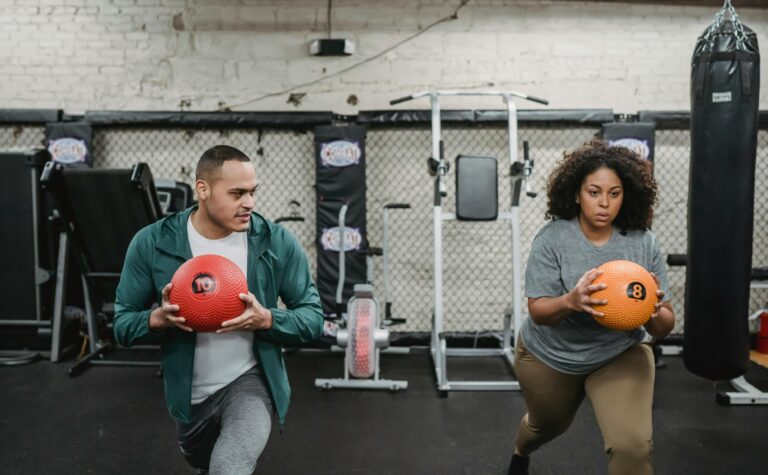How to Create a Sustainable Fitness Routine

Creating a sustainable fitness routine is essential for long-term health and well-being. The key is to develop a plan that fits your lifestyle, keeps you motivated, and can be maintained over time. Here’s a comprehensive guide to help you establish and stick to a sustainable fitness routine:
1. Set Realistic Goals
- SMART Goals: Make sure your goals are Specific, Measurable, Achievable, Relevant, and Time-bound. For example, “I will walk 30 minutes a day, five days a week, for the next month.”
- Long-term Vision: Think about what you want to achieve in the long run, but break it down into manageable short-term goals to keep you motivated.
2. Choose Activities You Enjoy
- Find Your Passion: Whether it’s dancing, swimming, running, or yoga, choose activities that you genuinely enjoy. You’re more likely to stick to a routine if you look forward to the exercise.
- Variety: Mix up your workouts to prevent boredom and work for different muscle groups. Incorporate cardio, strength training, flexibility exercises, and balance workouts.
3. Start Slow and Progress Gradually
- Ease Into It: Start with activities that match your current fitness level. Gradually increase the intensity, duration, and frequency of your workouts as your fitness improves.
- Listen to Your Body: Avoid pushing yourself too hard too quickly, which can lead to burnout or injury. Rest and recovery are just as important as the workouts themselves.
4. Create a Schedule
- Consistency: Aim for consistency rather than perfection. Schedule your workouts like any other important appointment to ensure you stick to them.
- Balanced Routine: Include different types of exercises throughout the week. For example, designate specific days for cardio, strength training, and flexibility work.
5. Make It Convenient
- Location: Choose a gym close to your home or work, or opt for home workouts to eliminate travel time and barriers.
- Time of Day: Identify the time of day when you are most likely to exercise, whether it’s in the morning, during lunch breaks, or in the evening. Stick to this routine to make it a habit.
6. Prepare and Plan Ahead
- Workout Gear: Lay out your workout clothes and gear the night before to save time and reduce excuses.
- Meal Planning: Fuel your body with the right nutrients. Plan balanced meals and snacks that provide energy for your workouts and aid in recovery.
7. Track Your Progress
- Fitness Journal: Keep a fitness journal or use a tracking app to record your workouts, set goals, and monitor your progress.
- Celebrate Milestones: Recognize and celebrate your achievements, no matter how small. This will boost your motivation and confidence.
8. Stay Accountable
- Workout Buddy: Partner with a friend or join a fitness group for mutual support and motivation.
- Professional Guidance: Consider hiring a personal trainer or joining a fitness class to receive expert guidance and stay committed.
9. Incorporate Rest and Recovery
- Rest Days: Ensure you have at least one or two rest days per week to allow your muscles to recover and prevent overtraining.
- Sleep: Aim for 7-9 hours of quality sleep each night, as rest is crucial for muscle recovery and overall health.
10. Stay Flexible and Adapt
- Adjust When Needed: Life can be unpredictable. If you miss a workout, don’t be too hard on yourself. Just get back on track the next day.
- Seasonal Changes: Adapt your routine to fit different seasons or circumstances. For example, indoor activities during winter or incorporating more outdoor workouts during summer.
11. Mind-Body Connection
- Mindfulness: Practice mindfulness techniques, such as deep breathing or meditation, before or after workouts to enhance your mental well-being.
- Holistic Approach: Consider incorporating practices like yoga or tai chi that focus on both physical fitness and mental relaxation.
12. Stay Motivated
- Music and Entertainment: Create workout playlists or watch your favorite shows while exercising to make your workouts more enjoyable.
- Goal Refresh: Periodically reassess and refresh your fitness goals to stay motivated and challenged.
Conclusion
Creating a sustainable fitness routine involves setting realistic goals, choosing activities you enjoy, starting slowly, and being consistent. By making your workouts convenient, preparing ahead, and tracking your progress, you can build a routine that fits seamlessly into your lifestyle. Remember to stay flexible, incorporate rest, and keep yourself motivated with various techniques to ensure long-term success. A sustainable fitness routine is a journey, not a destination—enjoy the process and celebrate your achievements along the way.






